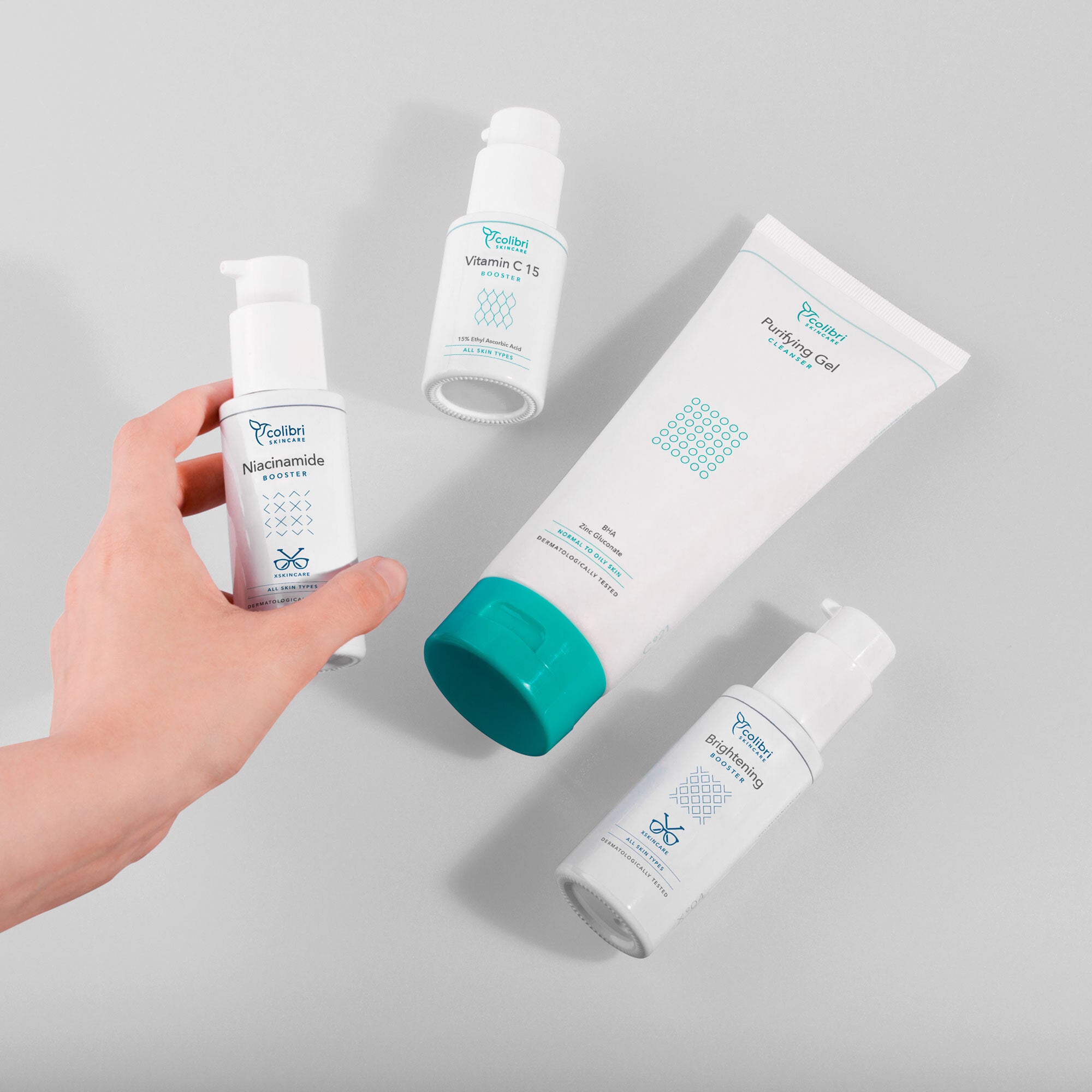
Why you don't want parabens in your beauty products!
No sooner has the clientele become accustomed to an ingredient than the substance is critically eyed and warned against. Therefore, it is completely understandable if you roll your eyes in annoyance and would rather turn to more pleasant topics. Nevertheless, it is worthwhile to understand the background and banish questionable substances like parabens from your bathroom.
What's it all about? Why is it in there?
Parahydroxybenzoic acid - even without having sipped generously on Prosecco, it's hard to pronounce this word. That's why paraben is the more common term for an ingredient found in many foods, consumer products such as shoe polish, and cosmetics. The substance occurs naturally, but is produced synthetically for industrial use. Advantageously, parabens slow down microbial processes and have a healing effect. However, these positive properties do not relate to the human organism, but to the marketed product. Simply, the addition of the substance facilitates preservation, for example in skin creams or ready-made meals.
Unattractive link to cancer
Parabens were also inconspicuous as an ingredient in cosmetic products for a long time, as they appeared to be skin-friendly and rarely triggered allergic reactions. However, the tide has turned with research findings that at least suggest questionable facets. A study conducted by British scientists in 2004 attracted particular attention, as parabens were discovered by chance in samples taken from breast tumors. From a scientific point of view, this does not yet close the chain of evidence that the substances reached their destination via cosmetic products or food and promoted breast cancer. However, even the unreflective earthling has been left with a bad taste ever since.
Concerns around hormone balance
The second problem is that parabens have structural similarities to the female sex hormone. As a result, experts now largely agree that the chemicals can have at least an attenuated effect similar to that of the female sex hormone estrogen. Strictly speaking, research into the consequences is still in its infancy. But even the layman suspects that interfering with the body's own hormone balance can upset some processes and have negative consequences.
Take warning signals first or wait for the final proof?
Advocates of parabens cite the fact that the studies published to date have not yet produced results that can be generalized. They also note that because of strict EU guidelines, the maximum concentration in a product is clearly regulated and amounts to minimal levels. In fact, both objections are correct. However, clear scientific evidence for the positive and negative properties of a substance is always a lengthy and costly matter. Therefore, it is justified to pick up the first warning signals and avoid the controversial ingredients. Who wants to back the wrong horse? On top of that, the preferred parabens for cosmetics are fat-soluble, which makes them easy to incorporate into the formulation but also just as likely to penetrate the skin layers.
The limping argument of product caps
The fact that the responsible EU authorities feel compelled to define an upper limit for parabens already speaks for itself. If this substance were as harmless as fresh spring water, this bureaucratic act would be unnecessary. The bureaucratically capped substances also appear in a remarkably large number of conventional cosmetic products and foods that are used on a daily basis. In this way, an individual dose is accumulated, which quickly lies significantly above the acceptable guideline value of the authorities. Incidentally, this discrepancy between the health safety of a product and the actual physical exposure occurs with many additives.
Paraben-free? No problem!
Accordingly, it is at least sensible to ensure that not too many questionable substances enter the body. The fact that parabens are not needed at all for a high-quality cosmetic product with a long shelf life already speaks for this prudent behavior. This is proven by many prudent manufacturers, including colibri cosmetics. Argan oil, for example, was stored and used for long periods of time in hot regions such as Morocco centuries before the invention of refrigerators and the discovery of preservatives. The only trick is to store the precious essence in a dark container that lets as little light through as possible. That takes care of all the hassle around preservation.
Bonus for reading rates for staying power
Both manufacturers and consumers have realized that parabens are no longer in. However, some labels are banking on the undesirable substance getting lost in the crowd of ingredient names. Therefore, here is a colorful mixture of alternative terms, which, with a bottle of Prosecco, becomes a fun drinking game for social gatherings: Isobutylparaben, E 214,Phenylparaben, E 219, PHB ester, Metagin. Butylparaben. Oxybenzoic acid, methylparaben, propagin, propylparaben, parahydroxybenzoate, hydroxybenzoate, isopropylparaben, oxybezoate, nipagin, hydroxybezoic acid and etyhlparaben. Have fun with the tongue twisters and paraben-free cosmetics!



